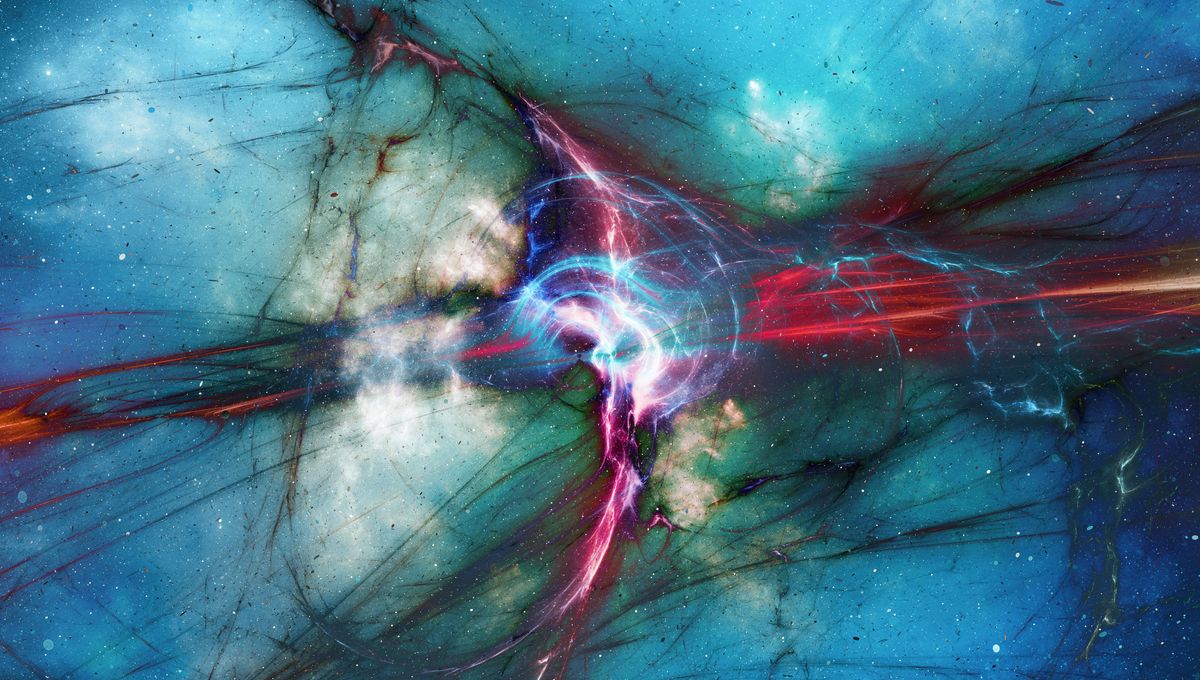
The existence of our universe is a little bit weird based on the known laws of physics. The problem is that matter – which makes up everything we see from galaxies to donkeys – has a twin called antimatter. It has the same mass but opposite electric charge, and when matter and antimatter interact they annihilate – turn into pure energy. As far as we know, they are exactly the same but something right after the Big Bang favored matter a little bit more.
So the universe became rich in matter and only a tiny fraction of antimatter remains, produced in nuclear reactions and high-energy interactions. The fact that the universe is made of matter and not antimatter is a major unsolved problem in physics, something being investigated around the world.
What is antimatter?
Fundamental or even nuclear particles are not something we experience in everyday life, they are far too small to be sensed but we are familiar with them as concepts. Take, for example, the electron. It is the particle that goes through circuits carrying an electrical current, and it moves around the nucleus in atoms. It has an electric charge that is conveniently assumed to be -1.
Quantum theory worked on by physicist Paul Dirac in 1929 suggested the existence of two versions of the electron, one with positive and one with negative charge. It was Robert Oppenheimer and Hermann Weyl who convinced Dirac that the positively charged electron was a real particle. It was found in 1932 by Carl David Anderson (although many other physicists had observed these interactions before) and dubbed positron.
Any fundamental particle that is charged has its own antiparticle. Even neutral ones, with no electric charge, might have an antimatter version that differs only due to some quantum property. So for every quark that makes up protons, there are antiquarks that make up antiprotons. Putting one antiproton together with a positron, and you get antihydrogen.
How common is antimatter?
Since a few instants after the Big Bang, antimatter has become a rare beast. That doesn’t mean it does not exist at all in nature. Cosmic rays, the stream of charged particles from the universe, have positrons and antiprotons (and maybe even more complex antiparticles) but these are a tiny fraction much less than 1 percent of the total flux of particles.
Positrons and antineutrinos are produced in certain radioactive decay. Positrons are also released during some lightning strikes, and antiprotons were discovered in the bands of radiation that surround the Earth, the Van Allen’s belt.
It is a drop in the ocean compared to the availability of matter. Any interaction with regular matter destroys antimatter, releasing considerable energy, something that is seen as an intriguing way to travel in space at fast speed.
Using antimatter for space travel
The proposal for an antimatter-powered vehicle by NASA dates back to 1999. The idea would be to have protons collide with antiprotons. The collision would produce gamma rays, extremely energetic light, but also other particles. The idea would be to direct those new particles out, creating thrust. And a lot of it. They estimate that such an engine would have a specific impulse (a measure of efficiency) over 200 times higher than the space shuttle. Maybe over 2,000 times higher.
It would not be a sci-fi engine that warps space-time like in Star Trek, it still uses the concept that every action has an equal and opposite reaction. But the action in this case is a big one. Enough to cut the travel time across the Solar System significantly.
If this engine has such promise why are we not building it? Well, there are many problems that need to be solved before we can even build a working prototype.
The cost of antimatter
Given that antimatter disappears at the contact with matter, it is difficult to contain. CERN holds the record for the containment of antihydrogen trapping it for about 17 minutes in 2011. That was containment to study its properties nothing fancier than that. And the amount trapped is small, just 309 atoms.
It is difficult to produce antimatter, which makes it the most expensive substance ever created. In NASA’s antimatter engine the estimate that one billionth of a gram costs about 62,500 dollars. CERN estimated in 2008 that the actual production of one billionth of a gram cost the equivalent to a few hundred million dollars.
Of course, if there were dedicated facilities that were churning out antimatter, the cost would go down but for now, that is the remit of highly specialized and complex experiments.
Source Link: What Is Antimatter And How Could We Use It To Travel In Space?